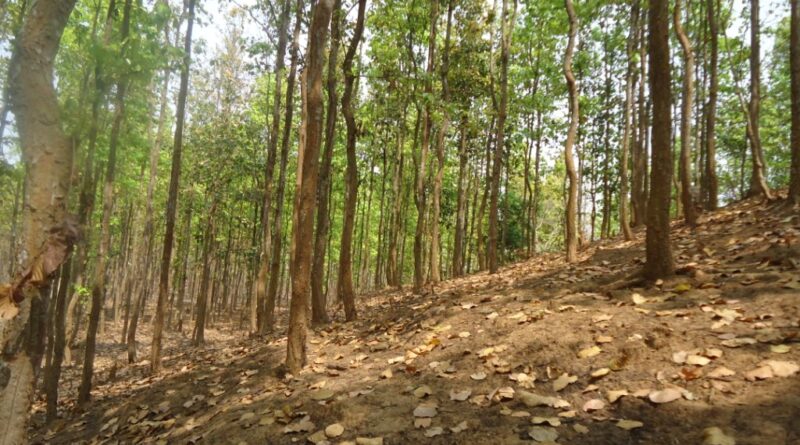Soil Survey- Introduction, Objectives, Uses and Types
Soil Survey
Definition
Soil survey is defined as the study of morphology of soil in the field, classification of soils of the area in well defined units, corroboration of diagnostic soil properties in the laboratory, prediction of the adaptability of these soils to various uses, and plotting their extent and boundaries on a map
Objectives of Soil Survey
Since the initiation of surveys in 1899 the principal objectives were to predict whether new crops could be grown on soils where they were never grown before and to learn insomuch about certain soils so as to predict how they would respond to irrigation with a known quality and quantity of irrigation water. These objectives have been refined and expanded to include a rational means of transferring technology from one soil to another, interpretations for predicting land use for every soil mapped and to be used as a scientific base for zoning laws and taxation.
In a broad sense the objective of soil survey and both fundamental and applied. Fundamental soil survey includes in expanding knowledge and understanding of different types of soils in relation to their genesis, development, classification and nomenclature. In addition to fundamental objective of soil survey, applied soil survey also includes soil maps.
Soil survey and mapping help in
(i) The transfer of technology under different management practices and soil conditions.
(ii) Providing information needed for developing optimum land use plans and for bringing new areas under agricultural uses.
(iii) Delineating the problematic soils, such as saline-soil, waterlogged, eroded and waste lands and in suggesting soil and water conservation measures.
(iv) Land settlement, rehabilitation, tax appraisal, locating air-ports and other engineering structures etc. and in public sanitation works.
(v) Demarcating nutrient deficient and disease infested areas which may indirectly help in correction of particular nutrient deficiency and controlling diseases.
Use of Soil Survey
Soil survey bulletins and maps are useful as a basis for other scientific work. Land appraisal and evaluation, sociological investigations and statistical studies are other interests served. Soil survey coupled with Nutrient index may be used for assessing potential productivity and fertilizers requirement of an area. The agricultural agents and extension specialists find the bulletin and survey maps a guide in making recommendations and. suggestions Predictions can be made of hydrologic changes in relation to modification in land-use patterns. Prospective road sites can be selected from soil survey maps. Estimates of infiltration and water runoff can be made based on the soil features enumerated in soil survey bulletins.
Types of Soil Survey
Depending upon the objective, method, type of base map available and the intensity of
observations, four types of soil survey are recognized which are given below
(i) Detailed soil survey
(ii) Reconnaissance soils survey
(iii) Detailed-reconnaissance soil survey
(iv) Semi-detailed soil survey.
(1) Detailed Soil Survey. In this soil survey, boundaries of soil units are delineated from observations by the means of actual traverses throughout the course of the boundary. Soils are inspected in detail, the close intervals in an area to find out differences which can be significant in their use and management. Detailed soil surveys are conducted to furnish information required for a proper assessment of soil properties, terrain features, errosional aspects and other related factors that can help in making out the use the management practices and ability for soil conservation and maintenance of soil fertility and better production of crops. Aerial photographs (1:159000 scale) or Cadastral maps (1 : 8,000 or 4,000 scale) are generally used as ground material for preparing soil maps to be used in detailed soil surveys. The mapping units on a
detailed soil map show, soil types series and phases. Detailed soil surveys are laborious, time consuming and much expensive. Detailed soil survey is of two types, i.e. low and high intensity survey.
(ii) Reconnaissance Soil Survey:
This type of soil survey is carried out so as to prepare resource inventory of large areas. It identities broadly the kinds of soils and the extent of their distribution. It empowers one to assess broad potentialities of soils and help recognize areas of potential that are suitable for modern and intensive agriculture and those in need of priority for amelioration. In these surveys, boundaries of soil are not completely traversed, but drawn partly by extrapolation. The scale of mapping is I : 50 (using topographical maps of the survey of India as base material or aerial photographs of similar scale wherever available. Reconnaissance soil surveys give valuable information for detailed soil surveys and for agricultural development broad and land use planning.
(iii) Detailed-Reconnaissance Soil Survey: It is a combination of reconnaissance and detailed soil surveys and is undertaken for understanding distribution of basic soil classes of series and their phases.
(iv)Semi-Detailed Soil Survey: This kind of soil survey comprises very detailed study of some selected strips cutting across many aerial-photo-interpretation (API) units for developing correlation between API units and soils. This type of soil survey gives sufficient
information about various kinds of soils, including those which are problematic.



